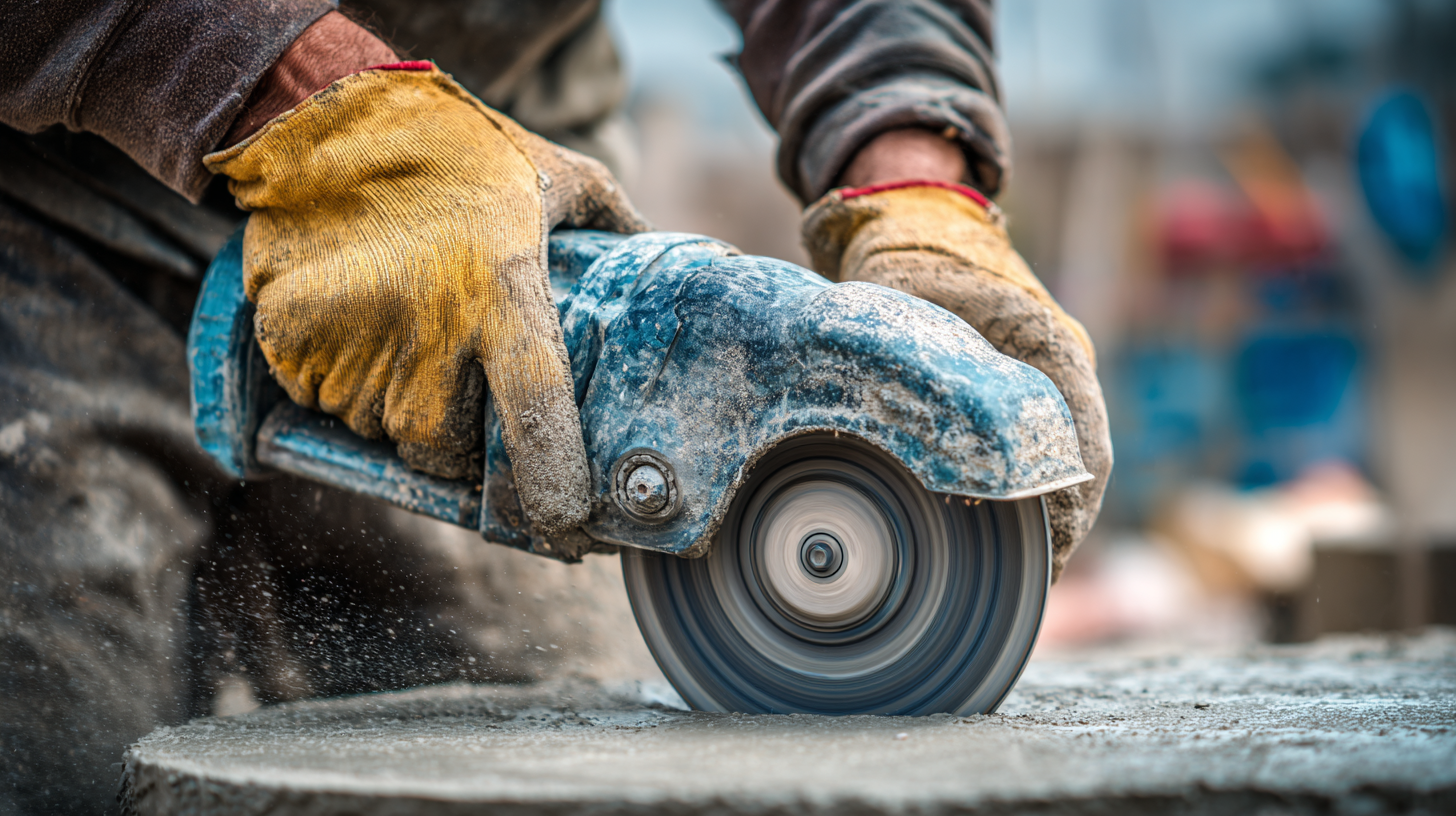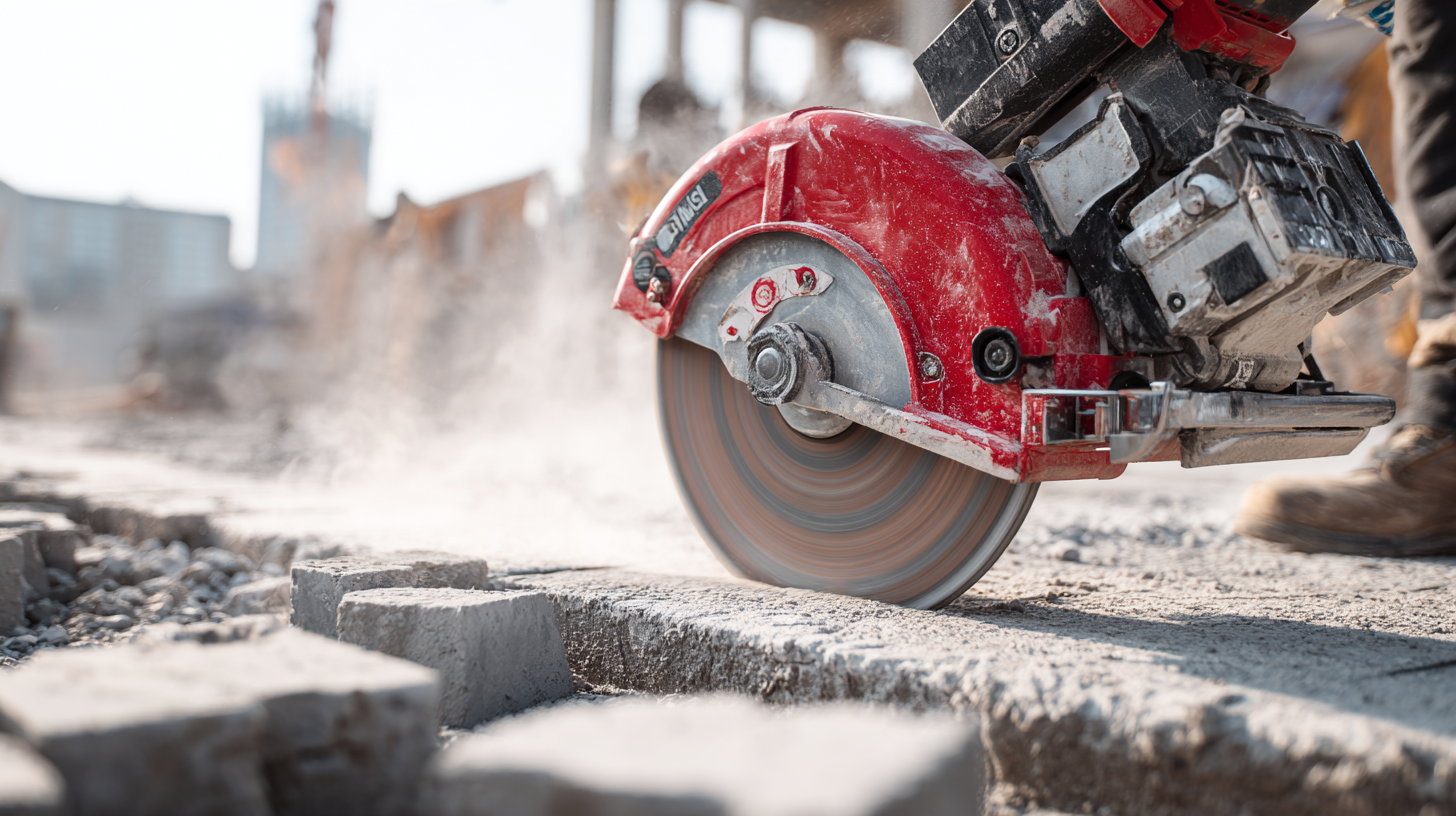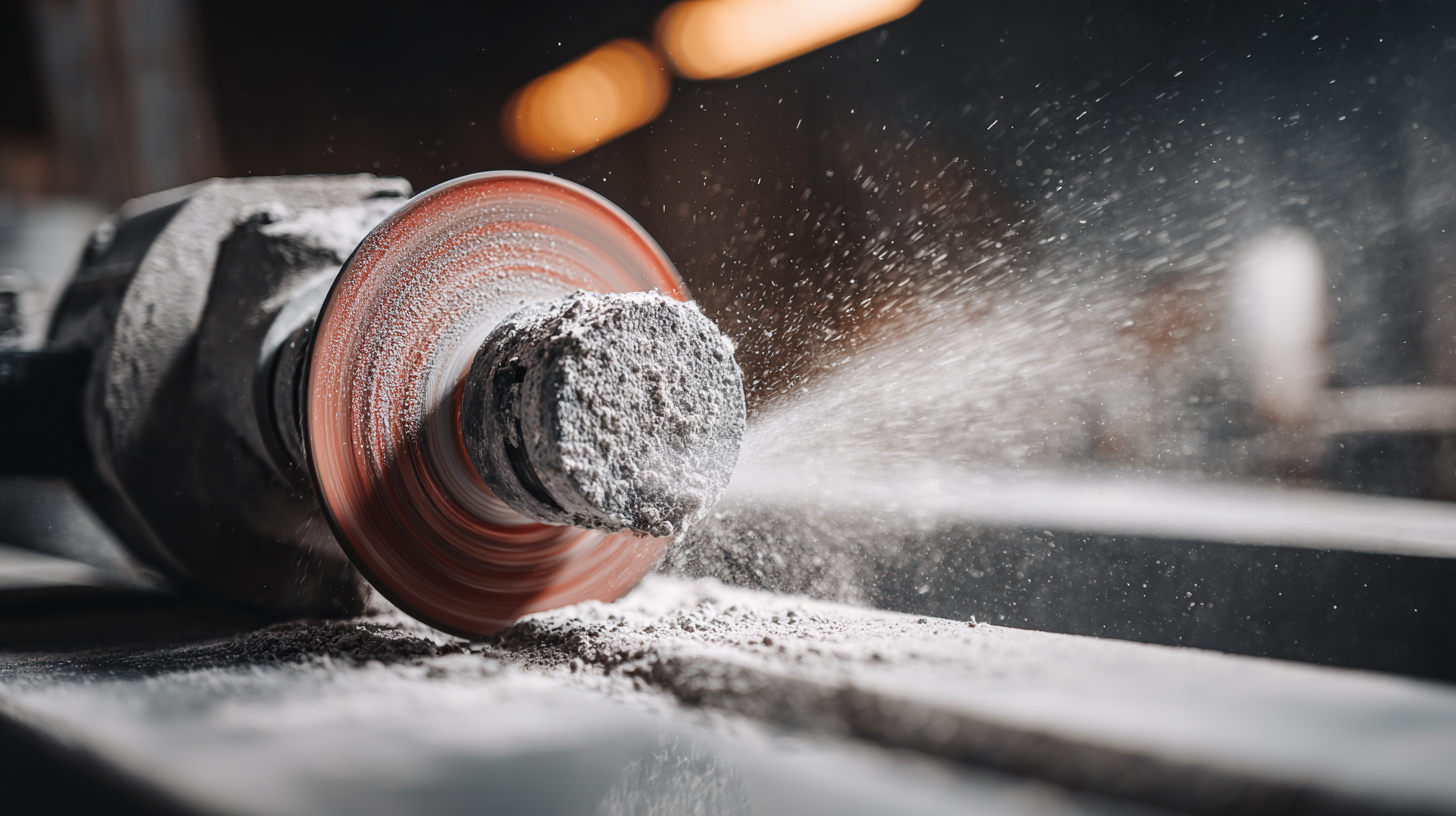Office USA: 706-658-1122 | Tech Support: 706-362-4813
Office Bulgaria: +359 431 64477
Unlocking the Future of Concrete Grinding Tools in 2025 Trends and Best Practices for Global Buyers
As the construction industry continues to evolve, the demand for advanced concrete grinding tools is expected to surge significantly by 2025. According to a recent report by Grand View Research, the global market for concrete grinding tools is projected to reach USD 10 billion, growing at a CAGR of 5.2%. This growth is driven by the increasing need for surface preparation in flooring, the rising popularity of polished concrete, and advancements in technology that enhance the efficiency and effectiveness of grinding processes.

In this blog, we will explore key trends and best practices that global buyers should consider when investing in concrete grinding tools, ensuring they stay ahead of the curve in a rapidly changing marketplace.
Emerging Technologies Shaping Concrete Grinding Tools by 2025
As the concrete grinding industry evolves, emerging technologies are set to redefine tools and practices by 2025. According to a recent report by MarketsandMarkets, the global concrete grinding tools market is projected to reach USD 4.6 billion by 2025, driven by rising demand in construction and infrastructure projects. This growth fuels innovation, shaping tools that enhance efficiency and sustainability.
One of the most promising trends is the advancement of diamond tools, which are increasingly used for their durability and precision. New formulations in diamond grinding technology, such as hybrid diamonds, promise to deliver longer tool life and better surface finishes, allowing contractors to achieve desired outcomes with less time and material waste. Additionally, the incorporation of smart technology into grinding equipment, like real-time monitoring systems, is empowering users to optimize their operational processes while reducing costs. As these innovations gain traction, global buyers can expect a significant transformation in how concrete grinding tasks are approached, making them more streamlined and environmentally friendly.

Key Global Trends Driving Demand for Advanced Grinding Solutions
As we approach 2025, the concrete grinding tools market is poised for transformative growth, fueled by key global trends that demand advanced grinding solutions. According to a recent report by MarketsandMarkets, the concrete grinding tools market is expected to reach USD 4.32 billion by 2026, growing at a CAGR of 5.5% from 2021. This substantial growth is attributed to a rise in construction activities, particularly in emerging economies, where urbanization and infrastructure development are accelerating rapidly.
One of the primary drivers of demand for advanced grinding solutions is the increasing emphasis on sustainability and eco-friendly practices in the construction industry. A survey conducted by McKinsey suggests that 70% of industry leaders are prioritizing sustainable technology to reduce carbon footprints. Techniques such as diamond grinding are gaining traction, as they not only deliver superior finish but also minimize waste and energy consumption, aligning with global sustainability goals. Additionally, the advent of automated and robotic grinding tools is set to revolutionize the market, providing faster, safer, and more efficient solutions for concrete surface preparation. This innovation caters to an increasingly skilled labor market, where efficiency and precision are paramount.
Unlocking the Future of Concrete Grinding Tools in 2025 Trends and Best Practices for Global Buyers
| Trend | Description | Impact on Demand | Best Practices |
|---|---|---|---|
| Sustainability | Growing demand for eco-friendly grinding tools and practices. | Increased purchases by environmentally conscious buyers. | Adopt sustainable materials and recycling practices. |
| Technological Advances | Integration of AI and IoT for improved efficiency. | Higher demand for modernized tools with advanced features. | Invest in state-of-the-art technology and software training. |
| Customization | Rising need for tailored solutions to meet specific project requirements. | Increased sales in markets that offer customizable options. | Engage with clients to understand needs and customize effectively. |
| Global Supply Chain | Need for resilient supply chains post-pandemic. | Reliability and consistency in sourcing products. | Diversify suppliers and streamline logistics. |
| Health and Safety | Increased regulations and focus on the safety of workers. | Heightened demand for ergonomic and safety-focused tools. | Implement safety training and invest in ergonomic tools. |
Best Practices for Selecting the Right Concrete Grinding Equipment
When it comes to selecting the right concrete grinding equipment, buyers must consider various factors to ensure they make an informed decision. First and foremost, assess the specific needs of your project. Different tasks, such as surface preparation, polishing, or coating removal, require distinct types of grinding tools. Understanding the scope and scale of your project will help you narrow down your options and select the most suitable equipment.
One important tip is to evaluate the power source of the equipment. Depending on your work environment, you may prefer electric grinders for indoor jobs or propane-powered ones for outdoor projects. Additionally, consider the grit level of the grinding pads; finer grits are ideal for polishing, while coarser grits are needed for heavy-duty grinding tasks. Testing equipment with different pads before making a purchase can significantly impact the quality of your results.
Lastly, don’t overlook the ergonomic design and usability of the machines. Look for features that reduce operator fatigue and enhance comfort during long hours of grinding. Adjustable handles, lightweight construction, and efficient dust collection systems will greatly improve the operator's experience and the overall effectiveness of your grinding endeavors. By prioritizing these aspects, global buyers can unlock the full potential of their concrete grinding projects in 2025 and beyond.
Sustainability in Concrete Grinding: Innovations for Eco-Friendly Practices
In the quest for sustainability, the concrete grinding industry is witnessing a remarkable transformation. Innovations are emerging that prioritize eco-friendly practices, marrying efficiency with environmental responsibility. One key trend is the development of diamond grinding tools that use advanced materials and coatings. These tools not only enhance the longevity and performance of grinding equipment but also reduce waste. The incorporation of recycled materials in the manufacturing process is becoming increasingly common, minimizing the ecological footprint of concrete grinding operations.
Moreover, the adoption of water-efficient grinding solutions is making waves. Traditional methods often relied on copious amounts of water, contributing to environmental strain. However, new technologies emphasize dry grinding techniques that limit water usage while maintaining high standards of surface finish. This shift is crucial as it not only conserves water resources but also simplifies cleanup processes, leading to safer and more efficient job sites. As global buyers prioritize sustainability, these innovations are setting a benchmark for the future of concrete grinding tools, driving a more responsible approach to construction and renovation practices.

The Future of Automation in Concrete Grinding Processes and Tooling
As we move into 2025, the future of automation in concrete grinding processes and tooling is set to reshape the landscape of the construction industry. Industry reports indicate that automation technologies, including robotic grinding tools and AI-driven systems, are projected to grow by over 30% annually. This is expected to enhance efficiency, improve precision, and reduce labor costs significantly. Automation not only streamlines operations but also minimizes the risk of human error, which is crucial in achieving the high standards required in concrete finishing.
**Tip**: Invest in training your workforce on new automated systems to maximize their potential and ensure smooth integration into your existing processes.
Furthermore, advancements in IoT devices have enabled real-time monitoring and data analysis, allowing for proactive maintenance and reducing downtime. According to a study by the International Concrete Repair Institute, adopting digital technologies can increase productivity by up to 25%. Global buyers should prioritize tools equipped with these smart features to stay competitive.
**Tip**: Stay updated on the latest technology trends by attending industry conferences and subscribing to relevant publications to ensure your tools and practices are aligned with market demands.
